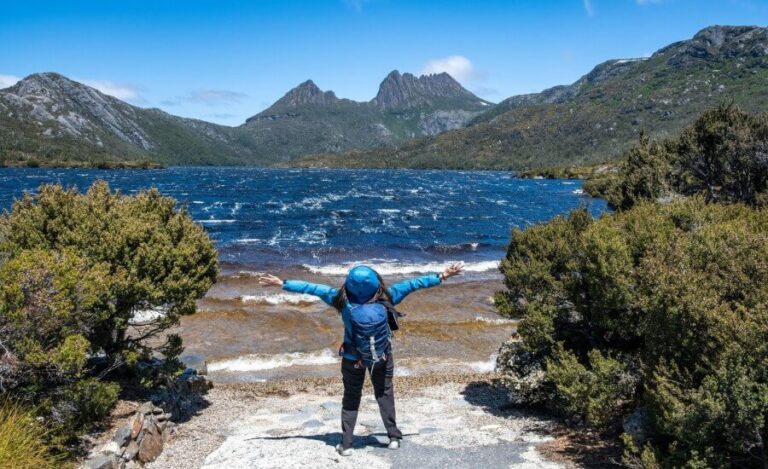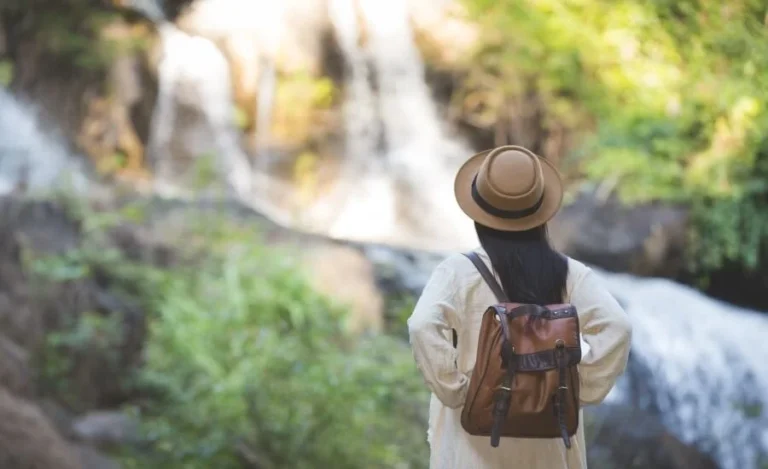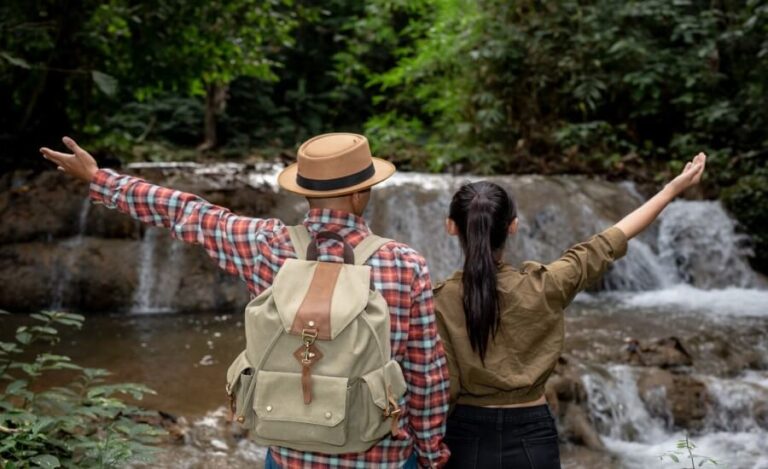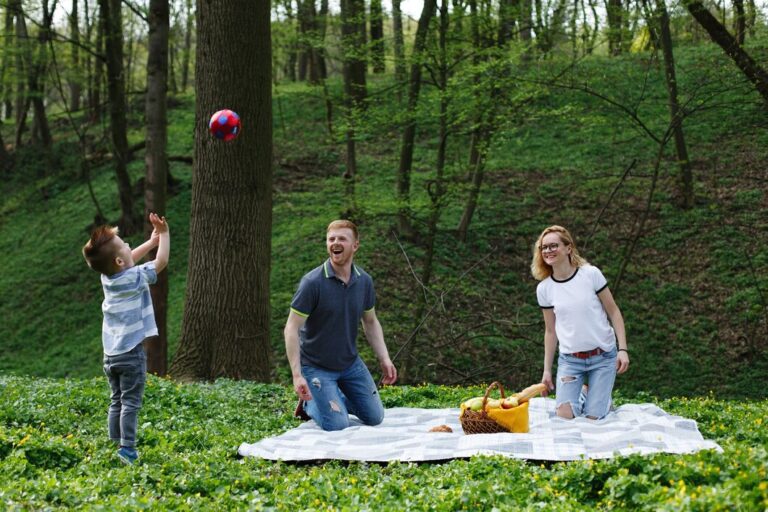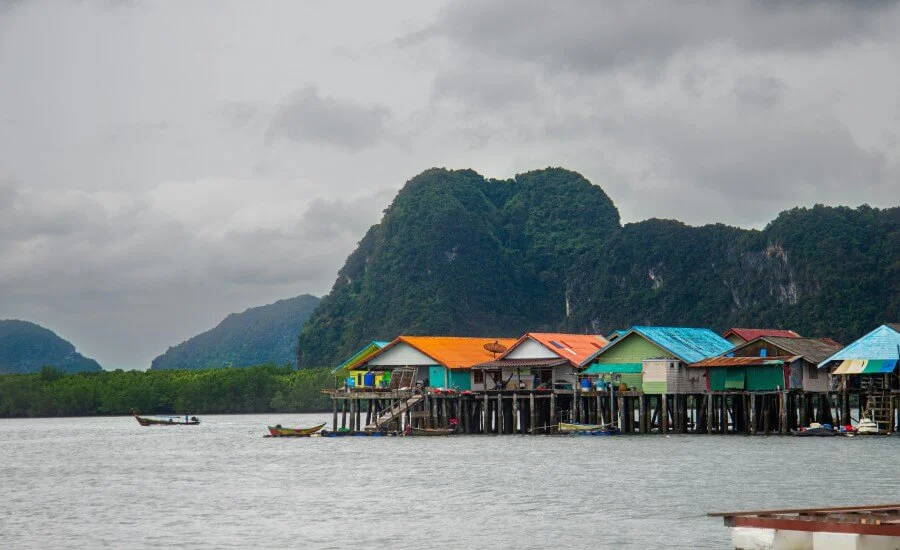
Imagine a world where your morning alarm isn’t the roar of traffic, but the gentle lapping of water against the stilts of your home. Picture children paddling small boats to school, vendors navigating canals laden with fresh produce, and entire communities thriving not on solid ground, but on the ever-shifting surface of lakes, rivers, and seas. This isn’t a scene from a fantasy novel; it’s the vibrant reality for millions living in Floating Villages and Unique Water-Based Communities across the globe.
These settlements, born from necessity, tradition, and remarkable human ingenuity, offer fascinating insights into adaptation and resilience. They represent a profound connection between humanity and water, showcasing lifestyles intricately woven with aquatic environments.
This post invites you to Explore Floating Villages, delving into their diverse cultures, clever adaptations, the challenges they face, and crucially, how we can visit these extraordinary places with respect, mindfulness, and a commitment to responsible tourism. Prepare to discover communities that challenge our land-based perspectives and redefine the meaning of ‘home’.
Floating Villages – Understanding Water-based Communities

Floating villages and water-based communities are diverse, ranging from homes built on sturdy stilts above floodplains to entire settlements constructed on buoyant rafts or artificial islands. Their existence is often deeply intertwined with the natural environment.
Communities like those on Cambodia’s vast Tonlé Sap Lake expand and contract with the seasonal monsoons, their inhabitants mastering life on Southeast Asia’s largest freshwater lake, which provides abundant fish.
In Myanmar’s serene Inle Lake, the Intha people have created floating gardens and villages built on stilts, developing unique leg-rowing techniques to navigate their watery world.
Further afield, the Uros people of Lake Titicaca in Peru construct their homes, boats, and even the islands they live on entirely from totora reeds, maintaining centuries-old traditions at high altitude. In West Africa, the stilt village of Ganvie in Benin, often called the “Venice of Africa,” was founded centuries ago as a refuge on Lake Nokoué.
Even sprawling megacities like Lagos, Nigeria, host water-based communities like Makoko, showcasing incredible resourcefulness and architectural innovation in challenging urban environments.
While some communities, like the historical floating villages of Vietnam’s Ha Long Bay, have faced relocation due to environmental and governmental pressures, many continue to thrive, demonstrating incredible human adaptability to aquatic life. These villages often arise from access to resources (fishing, aquaculture), adaptation to flood-prone areas, cultural tradition, or historical needs for refuge.
Examples of Floating Villages & Water Communities:
- Tonlé Sap Lake Villages (Cambodia)
- Inle Lake Villages (Myanmar)
- Uros Floating Islands (Lake Titicaca, Peru)
- Ganvie Stilt Village (Benin)
- Makoko Floating Community (Lagos, Nigeria)
- Villages in the Mekong Delta (Vietnam)
- Communities in the Amazon River Basin
- Historical Ha Long Bay Villages (Vietnam – largely relocated)
The Rhythm of Water: Culture and Daily Life

Life in a floating village moves to a different rhythm, dictated by the water. Daily routines revolve around boats, which serve as cars, school buses, market stalls, and social spaces. The economy is often intrinsically linked to the aquatic environment, with fishing and aquaculture forming the backbone of livelihoods for many communities, like those on the Tonlé Sap or along the Mekong Delta.
Floating markets, vibrant hubs of commerce and social interaction, are iconic features in many regions, where vendors paddle boat-to-boat selling everything from fresh produce and cooked meals to household goods.
Social structures and cultural practices are also deeply influenced by the watery environment. Unique skills are developed, such as the famous one-legged rowing technique of the Intha fishermen on Inle Lake, allowing them to stand and spot fish through reeds while propelling their boats. Homes are often built close together, fostering strong community bonds and interdependence.
Schools, temples, churches, and community halls may also be built on stilts or float alongside homes, ensuring that all aspects of life can be conducted on the water. Celebrations, festivals, and even spiritual beliefs are often tied to the rhythms of the lake or river – the seasons, the floods, the bounty it provides.
Visiting these communities offers a glimpse into a way of life where water isn’t just a resource, but the central organizing principle of existence. How does living surrounded by water shape one’s perception of community and connection?
Ingenuity on Stilts & Rafts: Architecture and Adaptation

The architecture of floating villages is a masterclass in human ingenuity and adaptation to challenging environments. Stilt houses, common in places like Ganvie or the Tonlé Sap, elevate living spaces above fluctuating water levels. Materials are often locally sourced – timber, bamboo, thatch – chosen for their resilience and suitability.
The height of the stilts can vary dramatically depending on the seasonal flood range. On the Tonlé Sap, some homes are built on buoyant platforms or incorporate floating foundations, allowing them to be moved as the lake’s edge shifts throughout the year.
The Uros islands on Lake Titicaca represent an extraordinary feat of organic engineering. Entire islands are meticulously woven from layers of buoyant totora reeds, which need constant replenishment as the bottom layers rot.
Homes and boats are also fashioned from the same reeds, showcasing a complete reliance on a single natural resource. In urban settings like Makoko, Lagos, structures rise from the water on sturdy timber stilts, often utilizing repurposed materials alongside traditional techniques.
Innovative designs, like the renowned (though currently non-operational) Makoko Floating School, demonstrated potential solutions for building resilient, sustainable structures in flood-prone aquatic environments. However, infrastructure remains a significant challenge for many water-based communities, particularly regarding access to clean drinking water, effective sanitation systems (waste often goes directly into the water), and reliable electricity.
Responsible Ripples: Exploring Floating Villages Ethically

While the unique lifestyles of floating villages are fascinating, it’s crucial to Explore Floating Villages in a way that is respectful, ethical, and beneficial to the communities themselves. Unregulated or insensitive tourism can easily become intrusive, exploitative, and damaging to both the culture and the environment. Avoiding the “human zoo” phenomenon – where residents feel like exhibits – is paramount.
The most critical step is choosing local guides and boat operators whenever possible. This ensures your money directly supports the community and provides you with authentic, knowledgeable insights. Be mindful that you are visiting people’s homes and communities, not just a tourist attraction.
Always ask permission before taking photographs of individuals, especially children. Respect people’s privacy – avoid peering into homes or pointing cameras intrusively. Dress modestly, according to local customs, particularly if visiting religious sites within the village.
Engage politely, learn a few basic greetings, and approach interactions with humility and genuine interest rather than just as photo opportunities. Support the local economy directly by purchasing handicrafts or produce from residents, but do so respectfully without aggressive haggling. Be conscious of your environmental impact – avoid leaving any litter (especially plastic) and be mindful of the potential pollution caused by boat engines.
Responsible Visitor’s Guide:
- Research Beforehand: Understand the specific community, its culture, and any sensitivities.
- Choose Ethical Operators: Prioritize local guides and boat operators with good reputations who practice responsible tourism.
- Ask Permission for Photos: Especially for close-ups of people. Respect their right to say no.
- Dress Respectfully: Cover shoulders and knees, especially in more conservative areas or near religious sites.
- Interact Politely: Learn basic greetings (“Hello,” “Thank you”). Smile and show genuine interest.
- Support Local Economy: Buy authentic local crafts or produce directly from residents, tip fairly for good service.
- Minimize Environmental Impact: Do not litter. Carry reusable water bottles/bags. Be mindful of boat pollution.
- Respect Privacy: Avoid intrusive behaviour like pointing cameras into homes or private spaces.
- Be Aware: Understand the challenges the community faces (poverty, sanitation, etc.) and avoid contributing to problems.
- Consider Donations Wisely: If you wish to help, donate through established community organizations or schools rather than giving cash directly to children (which can encourage begging).
Navigating Change: Resilience and Future Challenges

Despite their remarkable resilience, many Unique Water-Based Communities face significant challenges in the 21st century. Environmental degradation is a major concern. Pollution from upstream agriculture, industry, and inadequate waste management within the villages themselves can contaminate the water they depend on for drinking, fishing, and daily life. Overfishing and resource depletion also threaten traditional livelihoods.
Climate change poses an existential threat. Rising sea levels endanger coastal stilt villages, while altered rainfall patterns and glacial melt impact the seasonal flooding cycles crucial to inland lake and river communities like those on the Tonlé Sap.
More extreme weather events also increase risks. Modernization and development present a double-edged sword. While improved access to education, healthcare, and economic opportunities is needed, it can also lead to the erosion of traditional culture and lifestyles.
Some governments have pursued relocation policies, as seen in Ha Long Bay, citing environmental or safety concerns, which can disrupt communities and sever their connection to ancestral waters. Balancing development needs with cultural preservation and environmental sustainability is a complex, ongoing challenge.
Poverty, limited access to quality education and healthcare, and the potential negative impacts of mass tourism add further layers of complexity. Yet, these communities continue to demonstrate incredible resilience, adapting and innovating as they navigate these pressures.
Considerations & Challenges: A Sobering Glance

While fascinating, it’s important to approach the exploration of floating villages with an awareness of the often-difficult realities faced by residents. Romanticizing poverty or overlooking significant challenges does a disservice to these communities. Key issues often include:
- Poverty: Many water-based communities struggle with economic hardship, relying on fluctuating resource availability.
- Sanitation: Lack of proper waste disposal and sewage systems often leads to water contamination and health issues.
- Access to Services: Reaching quality healthcare facilities and higher education institutions can be difficult and expensive.
- Tourism Impacts: Can bring income but also lead to cultural disruption, environmental strain, and exploitation if not managed responsibly.
- Climate Change Vulnerability: These communities are often on the front lines of rising sea levels and changing weather patterns.
- Displacement: Risk of forced relocation due to development projects or environmental changes.
- Cultural Preservation: Balancing traditional ways of life with the pressures and opportunities of the modern world.
Understanding these challenges allows for a more informed, empathetic, and responsible visit.
Responsible Visitor’s Guide

Visiting floating villages can be a rewarding experience if done thoughtfully. Keep these points in mind:
- Research: Learn about the specific community’s culture and challenges.
- Choose Ethically: Select local guides/operators committed to responsible practices.
- Ask Permission: Always seek consent before taking photos of people.
- Dress Modestly: Respect local customs and norms.
- Interact Respectfully: Learn basic greetings; be polite and humble.
- Support Locally: Buy crafts/food directly; tip fairly for genuine service.
- Minimize Footprint: No littering; avoid single-use plastics; be mindful of boat impact.
- Respect Privacy: Don’t be intrusive; remember these are homes.
- Be Informed: Understand the socioeconomic and environmental context.
Conclusion: Honouring Life on the Water

Floating villages and water-based communities are extraordinary examples of human resilience, adaptation, and cultural richness. They represent a unique way of life deeply intertwined with the aquatic world, showcasing ingenuity born from necessity and traditions passed down through generations. To Explore Floating Villages is to witness these living testaments firsthand, offering invaluable perspectives that challenge our land-centric views.
However, fascination must be tempered with responsibility. As visitors, we have a duty to approach these Unique Water-Based Communities with sensitivity, respect, and a commitment to supporting their well-being and preserving their environment.
By choosing ethical operators, engaging thoughtfully, supporting local economies directly, and being mindful of our impact, we can ensure that our exploration contributes positively rather than detracting from these fragile, fascinating worlds. Let us seek not just to see, but to understand and honour the remarkable rhythm of life on the water.
